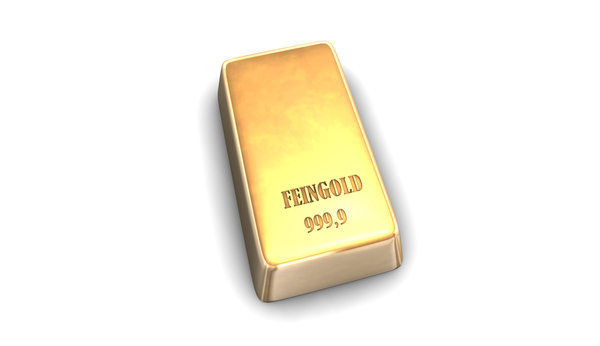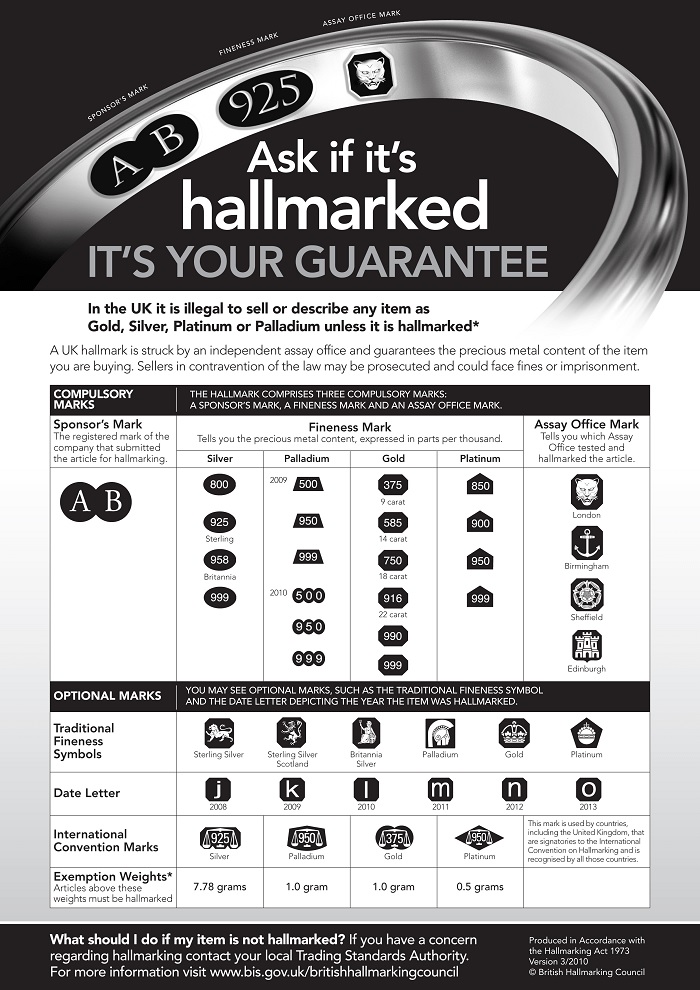
What are Gold Hallmarks?
Hallmarking is a necessary part of the production process for Precious metals as they are rarely used in their purest form. Instead, they are alloyed with other metals, either to reduce the costs, add durability or even to change the appearance. Rose Gold for example, has a higher Copper content and white Gold a higher proportion of Nickel to give their distinctive hue. Because it isn’t possible to detect the metal content by sight or touch hallmarking provides this information. In the UK and many countries around the world it is a legal requirement to hallmark products containing precious metals.
Hallmarking is undertaken independently by an assay office that tests samples of products for their stated content of precious metals. This guarantee of the quality of a precious metal product that is being advertised, and sold as such, is a legal requirement in the UK.
Hallmarks provide a wealth of information. Firstly they confirm the content of precious metals present in an item. They also provide information about the particular assay office that tested the item and information about the manufacturer and sometimes the date of production although this can be connected to the manufacturer’s stamp that changes periodically. This information is provided in a series of stamped logo’s which to the trained eye provide all the information needed to confirm an item’s quality.

Historically in England only certain towns had the right to hallmark precious metals. This was granted through a Royal Charter and spoke for the loyalty of an area to The Crown that they were trusted to produce such goods. Perhaps the most famous are found in London and Birmingham who each have their own Assay Office and a distinct hallmark which identifies them. Birmingham’s hallmark is an anchor whilst London has a Lion.
A form of hallmarking has been used since the Byzantine period around modern day Istanbul. Later Kings in the Middle Ages dictated the quality of metals to be used in their coinage but this was inconsistent until Stamped Hallmarks were introduced to the production process. In Western Europe the earliest use of Stamped Hallmarking can found in the 14th century with individual makers’ marks and later dates being added.
A modern hallmarking standard was established in 1973 with a common control mark recognised by all signatories to the Vienna Convention. It is worth noting that not all manufacturers around the world signed up to this convention with some preferring to keep their independent hallmarking systems.
Today there are countless different hallmarks from around the world and knowing each of them is a specialised task in its own right although internet pages are available should you wish to identify a particular hallmark.

+ There are no comments
Add yours